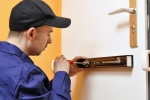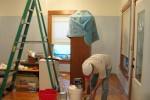Proper home ventilation is an important aspect of ensuring you and your family’s well-being. While you may be able to fuss about the food that they eat and the beverages that they drink, how can you be entirely sure that the air they are breathing is safe and does not contain contaminants, bacteria or pollutants which can endanger their well-being.

What is Ventilation and What are its Goals?
Ventilation is the movement of air from inside your home going out, as well as air from the external environment coming in. The entire idea of proper home ventilation is the control of this movement so that the air which is found inside your home does not stay for a very long period of time and become stale. This control of air flow also plays a huge role in the minimalization of utility costs so that heated air or cold air stay inside the house and does not leak out.
Why is Home Ventilation Important?
Air quality is something which you should always keep an eye on especially since it’s what you and your family is breathing in every time you are at home. The tendency for air inside any house is that the longer it stays within, the more contaminated and polluted it then becomes. This “stale” air is what makes the room feel stuffy and warm. At the same time, odors and humidity which have accumulated inside the home would then linger. Some of the gasses retained inside your house, such as carbon dioxide, are considered to be dangerous especially when they reach levels of 6 percent and 10 percent, which can cause a person to have trouble breathing and become unconscious, respectively. While you can always open your windows in order to get stale air out, this may not be a good option for those living in dangerous communities.
What are the Different Aspects of Ventilation?
Ventilation may mean the Influx of Air but it also has a Couple of Factors:
Infiltration. Natural infiltration is the method where we are able to get fresh air from the outside environment. The higher the air-change rate, the better it is for the overall ventilation of the house. For instance, an air-change rate of 0.5 percent means that half of the air inside your home is being changed once for every hour. On the other, hand exfiltration is the moving out of air.
Distribution. Fresh air shouldn’t just linger in one part of your house; it should be able to move into the different rooms and distribute properly. This involves the use of ducting systems which will allow air to move from one room to another.
Circulation. Fresh air inside your house will only stay fresh for a certain period of time. This means that there should be proper circulation of air so that the fresh air doesn’t get stuck inside your home and ends up absorbing all of the allergens and contaminants from inside your home. Fans are there in order for air in tiny spaces, such as under beds and couches, to be kept moving.
Phil Farell is an avid blogger on home improvement. He loves to share many awesome tips about bathroom renovation, carpet cleaning and home ventilation systems. When not blogging, he spends his time learning more about home decors and interior designing. He is presently connected with Harrisons Home Ventilation systems























